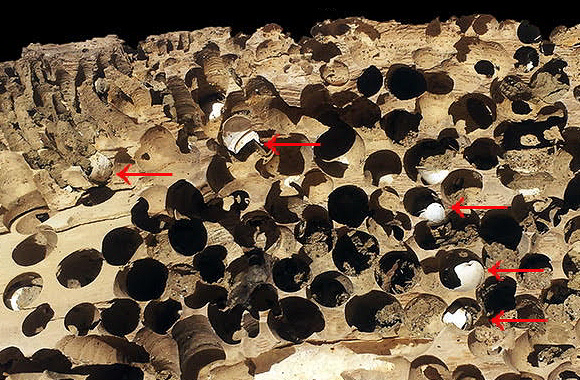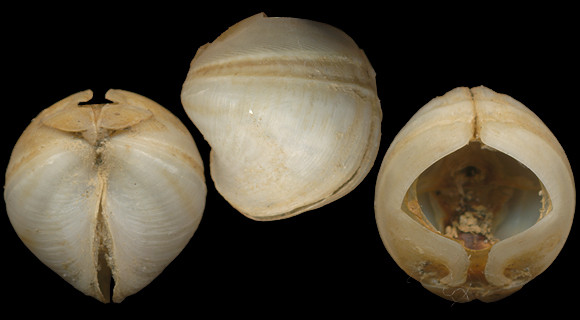
Synonym: Pholas xylophaga Deshayes.
Members of the genus Xylophaga Turton are often found in submarine canyons, which « contribute substantially to channelling matter from the shore to deep basins » at the edges of the continental shelfs (Romano, Voight, Pérez-Portela & Martin, 2014). But the species inhabits also in floating woods, as did this specimen collected off Cesenatico, Forli Cesena, Emilia-Romagna, NE. Italy. 8mm.
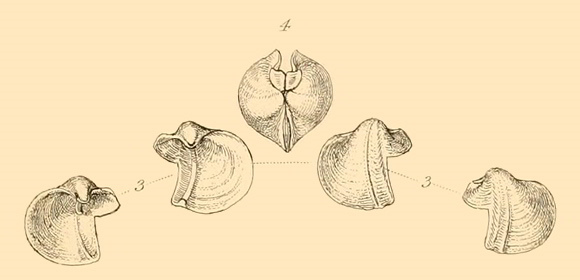
« A hasty glance at this interesting and uncommon shell would induce us to place it with Teredo, and the closing of its posterior side, where there is not the slightest gape, will probably be the first differential point to attract our attention to its generic as well as specific dinstinctness. […] Like the Teredines, it penetrates wood which has been immersed for any considerable period in salt water ; wherein it forms for itself an oval receptacle, or cavity, having a small and single external orifice, and nowhere lined with any shelly deposition. […] Löven enumerates Xylophaga dorsalis among the inhabitants of the seas of Norway. »
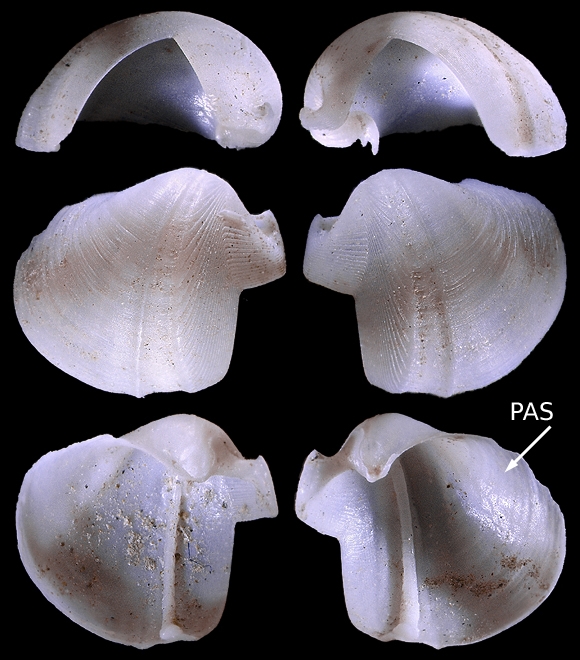
Driftwood, Marbella, Málaga, Andalucia, S. Spain. 5mm.
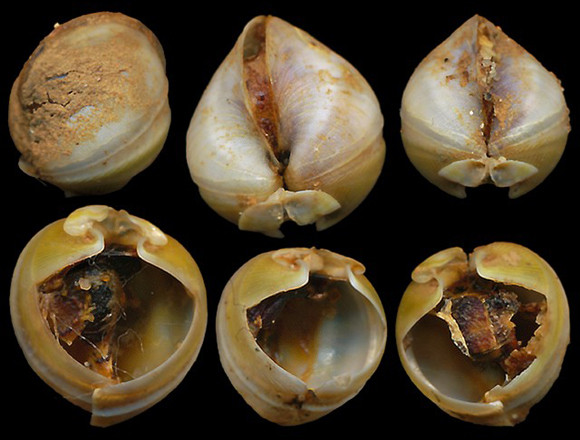
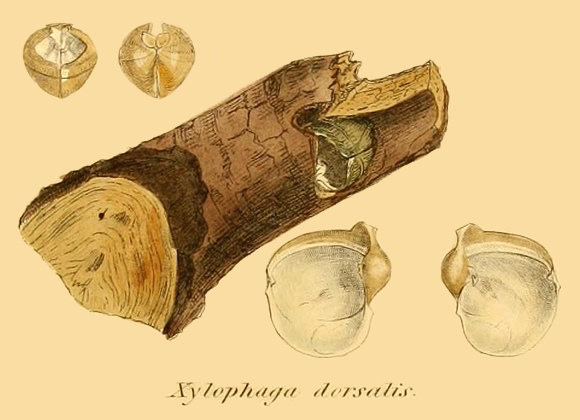
« Early in the month of May last, Major Martin of Ardrossan, in Ayrshire […] sent me a piece of wood bored by the Xylophaga dorsalis, and labelled as from the dock-gates, Ardrossan. Not having before heard of this animal attacking the fixed timber of our harbours – it has been found in drift wood or portions of vessels cast ashore – I made immediate inquiry respecting it, […] It may give some idea of the fequency of the Xylophaga’s perforations in the different pieces of wood, to mention, that on an average at least one-half is occupied by its burrows. The Xylophaga has never, like the Teredo, been observed by my correspondent to form a testaceous tube or lining to its cell. » – W. Thompson: “Note on the Teredo norvegica, Xylophaga dorsalis, Limnoria terebrans and Chelura terebrans, combined in destroying the submerged wood-work at the harbour of Ardrossan on the coast of Ayrshire”, The Annals and magazine of natural history… vol. XX, nb 132, London 1847, art. XVI.
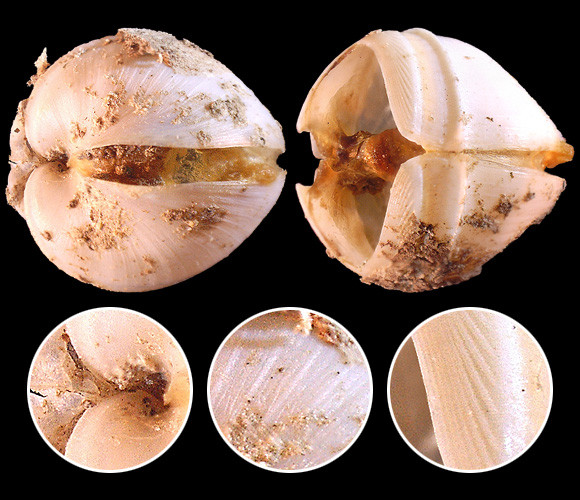
« This species differs from Teredo navalis, Turt., by boring against the grain of the wood […] in a diagonal manner. » – W. Thompson: op. cit. Gioia Tauro, Calabria, SW. Italy. 7mm.
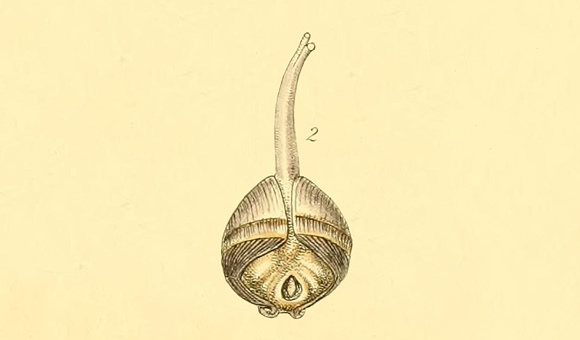
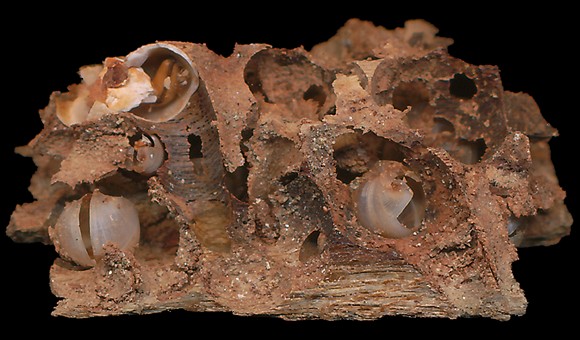
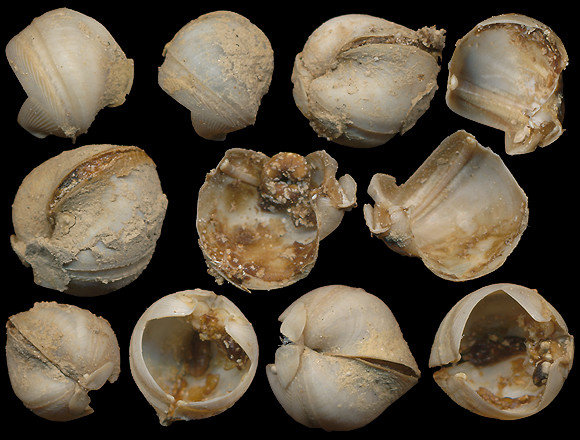
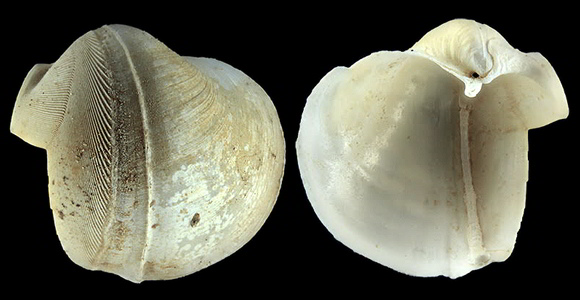
– (CC BY-NC-SA) –
Notice the apophysis, much smaller than in Teredo navalis.
